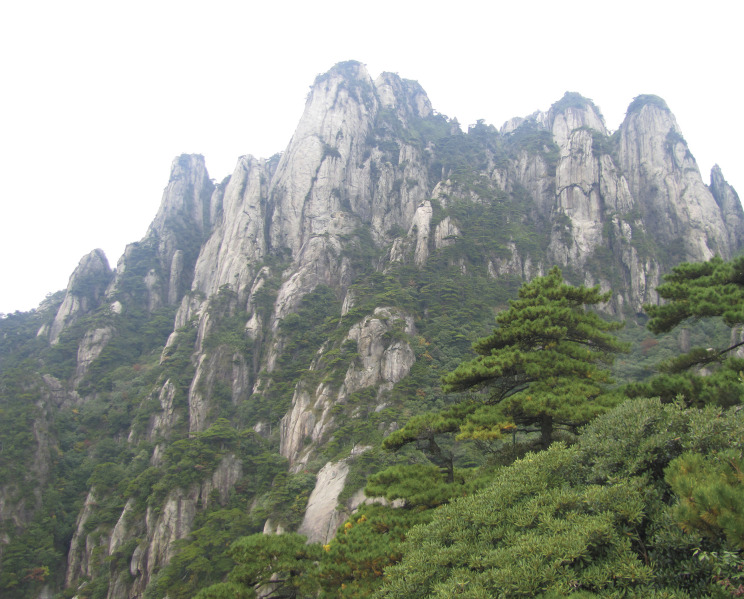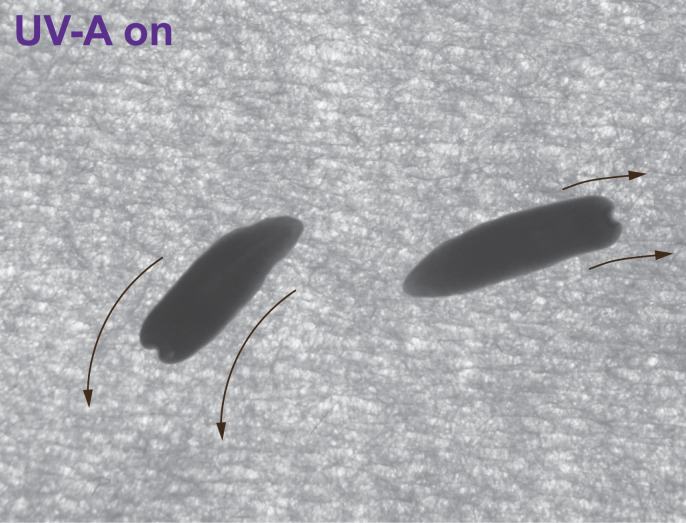ENVIRONMENTAL SCIENCES
Oceanic islands of the Nusa Tenggara island chain in Indonesia.
Pleistocene human colonization and insular faunal extinction
Humans have colonized islands since at least the Early Pleistocene Epoch. However, whether early human arrival to previously unoccupied islands contributed to insular faunal extinction during the Quaternary Period remains unclear. Using archaeological and paleontological records dating to the Pleistocene of 32 island groups with documented anthropogenic presence, Julien Louys et al. examined whether early anthropogenic presence on islands coincided with the disappearance of insular fauna. The authors compiled a list of last-appearance dates for every extinct vertebrate taxon recorded in previous literature. Islands were categorized as either oceanic islands, which have never been connected to a landmass, or continental islands, which were once connected to continents. Tools from Early to Middle Pleistocene deposits represent the earliest records of pre–Homo sapiens hominins on oceanic islands, with some dating back to more than 1 million years ago; however, several megafauna on oceanic islands became extinct later. The earliest records of insular H. sapiens date to between 73,000 and 63,000 years ago on continental islands and around 50,000 years ago on oceanic islands. However, several megafauna, including rhinos and tigers, survived into the Holocene Epoch. The findings suggest that Pleistocene humans did not contribute to the extinction of island megafauna, although extinctions accelerated in the Holocene following significantly increased anthropogenic activity, according to the authors. — M.S.
EVOLUTION
A population of Pinus taiwanensis.
Origin and evolution of northern hemisphere conifers
Unlike most organisms with a distribution following a latitudinal diversity gradient, conifers in the northern hemisphere are found mostly in middle-latitude mountainous terrain. Wei-Tao Jin et al. explored the macroevolution of Pinus, the largest genus of conifers, to reveal the mechanisms underlying this unique distribution pattern. Using 1,662 genes from transcriptomes, the authors reconstructed the evolutionary history of Pinus, covering nearly all species in this genus. The results revealed that although the origin of Pinus is ancient, approximately 90% of species in the genus originated in the Miocene, suggesting a rediversification of the genus in the Neogene. The results also showed that the midlatitude species are older than species at other latitudes. An analysis of environmental factors suggested that topography has likely played a key role in pine diversification. The authors also found evidence of development of fire-adaptation syndromes over time, as fire intensity and frequency increased from the early Oligocene to the late Neogene. According to the authors, lineage accumulation over evolutionary time scales in the midlatitude region, rather than diversification rate acceleration, may have given rise to the high species diversity of conifers. — P.G.
EARTH, ATMOSPHERIC, AND PLANETARY SCIENCES
Interglacial summer warmth and the Greenland Ice Sheet
If climate change continues unchecked, melting of the Greenland Ice Sheet (GrIS) is predicted to increase global sea level by up to 33 cm by 2100. However, such projections remain uncertain due to eroded terrestrial sedimentary records, which have obscured the effects of past climate conditions on GrIS retreat. Allison Cluett and Elizabeth Thomas analyzed the hydrogen isotopic composition of terrestrial biomarkers deposited in marine sediments approximately 280 km south of Greenland during the six interglacial periods of the past 600,000 years. Extremely warm summers occurred when the GrIS was relatively large during a relatively brief period of the Last Interglacial, namely Marine Isotope Stage 5e, approximately 130,000–115,000 years ago. By contrast, the ice sheet was likely substantially reduced in response to moderate summer warmth sustained for more than 10,000 years during the superinterglacial Marine Isotope Stage 11, approximately 425,000–375,000 years ago. According to the authors, persistently high summer temperatures, which are likely to continue if greenhouse gas emissions are not reduced, will probably be more harmful to the long-term stability of the ice sheet than a brief period of exceptional summer heat. — J.W.
ANTHROPOLOGY
Evolution of the oral microbiome
Bacteria inhabiting the oral cavity play important roles in health and disease, but how this diverse microbial community evolved is unclear. James Fellows Yates et al. analyzed 124 dental biofilm metagenomes from Neanderthals dating up to 100,000 years ago, modern humans dating up to 30,000 years ago, chimpanzees, gorillas, and New World howler monkeys. The analysis revealed 10 core bacterial genera that have been maintained throughout African hominid evolution and that are also shared with howler monkeys, suggesting that these microbial groups might have played a key role in oral biofilms for more than 40 million years. Currently, these core taxa are primarily involved in providing structural support within the dental plaque biofilm. In addition, the authors uncovered major differences in the microbial profiles of Homo and chimpanzees but striking similarities among Neanderthals and modern humans. In contrast to nonhuman primates, Homo is characterized by an abundance of Streptococcus species that can produce proteins that bind the enzyme amylase, which helps convert starch into sugars. This finding suggests that these microbes adapted to starch-rich diets early in human evolution. According to the authors, the study highlights the value of investigating ancient oral metagenomes to reveal key insights into major events in modern human evolution and prehistory. — J.W.
ENGINEERING
Artist’s conception of an oblique detonation wave engine-powered hypersonic aircraft. Background image credit: NASA.
Sustained detonation and hypersonic propulsion
Conventional propulsion fuels and technologies produce thrust through deflagration, which is a subsonic reaction wave, but supersonic and hypersonic propulsion may be required for future terrestrial and interplanetary travel. Detonation produces supersonic waves and is an intense form of energy release generally associated with blast explosions and supernovas. If controlled, detonation may be a method to achieve ultra-high-speed travel. Daniel Rosato et al. discovered an experimental configuration to produce and analyze the dynamics of controlled detonations. The configuration consists of a standing oblique detonation wave, fixed in space on a ramp. Fuel is injected in a hypersonic flow, which autoignites a steep shock wave. The intersection of the shallow and steep waves creates an extremely high-pressure and high-temperature triple point that produces a detonation wave sustained for the duration of active fueling. The authors found multiple flow regimes over the course of the development of a detonation wave as well as conditions for stable versus unstable detonation waves. According to the authors, the experimental configuration allows for a possible pathway to develop and integrate ultra-high-speed detonation technology, enabling hypersonic propulsion and advanced power systems. — P.G.
SUSTAINABILITY SCIENCE
An agricultural landscape near Ravenna, Nebraska.
Food production and air quality–related mortality
Food production increases levels of fine particulate matter in the atmosphere, thereby harming air quality. However, the extent to which specific foods affect human health via poor air quality is unclear. Using modeling and datasets from over the past decade, including cropland data from the US Department of Agriculture, emissions data from the US Environmental Protection Agency, and annual death rates from the American Cancer Society, Nina Domingo et al. calculated air quality–related US deaths attributable to US agricultural practices. Decreased air quality from food production was tied to 15,900 annual deaths, and 80% of those deaths were associated with a combination of livestock production and animal feed production. Ammonia emissions, mostly from fertilizer application and livestock waste from red meat production, were the primary contributors to air quality–related mortality. The counties collectively responsible for almost half of the total deaths attributable to poor air quality from agriculture were mainly located in California, Pennsylvania, North Carolina, and the Upper Midwest Corn Belt. The findings suggest that consuming more plant-based foods, improving livestock manure management, and using fertilizer additives to inhibit ammonia emissions may reduce mortality from poor air quality, according to the authors. — M.S.
NEUROSCIENCE
Coordinated movement by a decapitated flatworm is induced by UV-A light.
Flatworms can sense light without eyes
Flatworms have two sensitive eyes connected to a cerebral ganglion but can respond to light even after decapitation. Nishan Shettigar et al. report that, in addition to eyes, flatworms possess an independent ultraviolet (UV)-A–light-sensing system throughout their body that can coordinate movement. After confirming that the movement coordinated by this extraocular system is not localized to the cilia, the authors identified two opsin molecules that looked unlike other molecules in this photoreceptor family. Spatial expression analysis revealed two distinct photoreceptor cellular arrays lining the worm, with one array containing both opsins, noncanonical (NC) R-opn 1 and 2, and the other array containing only NC R-opn 1. Ablation experiments suggested that the cells expressing both opsins coordinate movement in response to UV-A light, whereas the cells with only one opsin may be involved in pigmentation. The authors examined light sensing in newly hatched and developing worms and found that the extraocular sensing develops postembryonically in adult-like animals. UV-A light can arouse worms from a resting state in which the eyes become unresponsive, and attenuating opsin expression prevents this low-light arousal. According to the authors, the results may help illuminate the development and evolution of two distinct light-sensing systems in a single organism. — T.H.D.
ANTHROPOLOGY

Seemingly frivolous gossip may at times serve an important function. Image credit: Shutterstock/mavo.
Gossip drives social bonding and helps people learn
Posted on May 7, 2021
David Adam
Oscar Wilde said the only thing worse than being talked about was not being talked about. Nevertheless, chit-chat about others has a dubious reputation. That’s unfair, say psychologists and social scientists, who argue that gossip is a useful communication tool, conferring benefits to those involved. Some research even suggests gossip had evolutionary advantages—a means of maintaining social norms as human groups grew in size.







